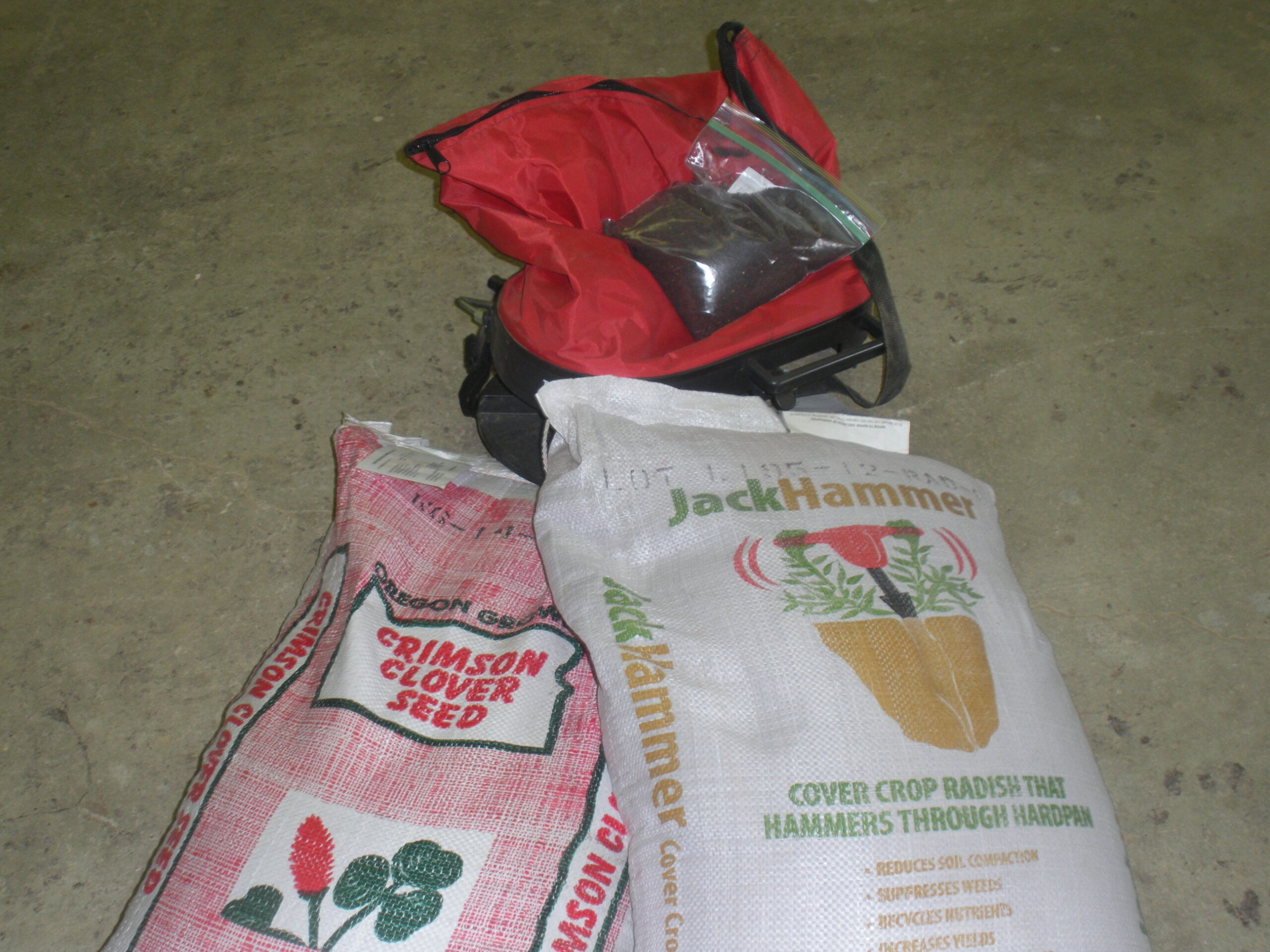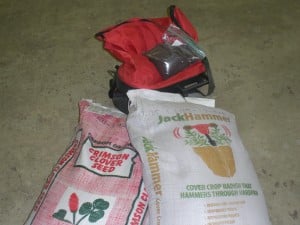Brad from the Union County Garden Coalition here and things are going well as we start winding down the growing season. After several weeks with just a little rain to get us through most of the gardens started to exhaust themselves That meant that we had to start making plans to get everything out of the gardens and make way for some cover cropping.
We are focusing our fall gardens on building soil health. Instead of planting a production crop, we are putting most of our garden space to rest until the spring with with a cover crop and hope that getting the soil quality right will help us produce more with less inputs such as fertilizer and other soil amendments. It can take several years to build up a soil that is full of the right balance of nutrients, microbes, and other beneficial stuff, but cover cropping can help speed up that process. Another great benefit is that it costs less than dumping a load of fertilizer on the gardens in the spring.
This year we have a lot more in-ground garden space that is in its first year of production. Many of the gardens did well, but with the right treatment, many of them could do much better. We will still be planting some fall crops in our raised beds and have most of those under way. In most of the in-ground spaces we will be using radishes and red clover to produce and forage nitrogen and produce green manure for the plots. We will be using about 8 pounds of each mixed with a few pounds of sand sown with a grass seeder. The radishes we are using are called “jack hammer” because they bore down into the soil and help break up harder clay soils like the ones in our region. We worked out this tactic after some insight from one of our local extension agents who just happens to be an expert on soil quality. (He will be leading a workshop later this fall once our cover crops are up and we get some early results on using this method).
We also sowed some turnips in some areas because everyone in our neck of the woods loves them and it is one of those plants that you can use the whole thing… there’s nothing better than cooking some turnips gratin, roasted turnips, or sauteed turnip greens – actually I just love turnip greens together with some kale and a light vinaigrette. Anyway, I could continue to digress on the versatility of one of our favorite vegetables, but I’ll get back to the point…
Soil quality is very important to a garden and getting the soil tested and planning for improving that quality is very important. Cover cropping, lime application, and light fertilizer applications are easy methods to use depending on how much time and resources you want to commit to you gardens. We are hoping that the cover crop method helps whip our gardens into shape and provides us with a lot more benefits so we can keep on growing more year after year!




Leave A Comment